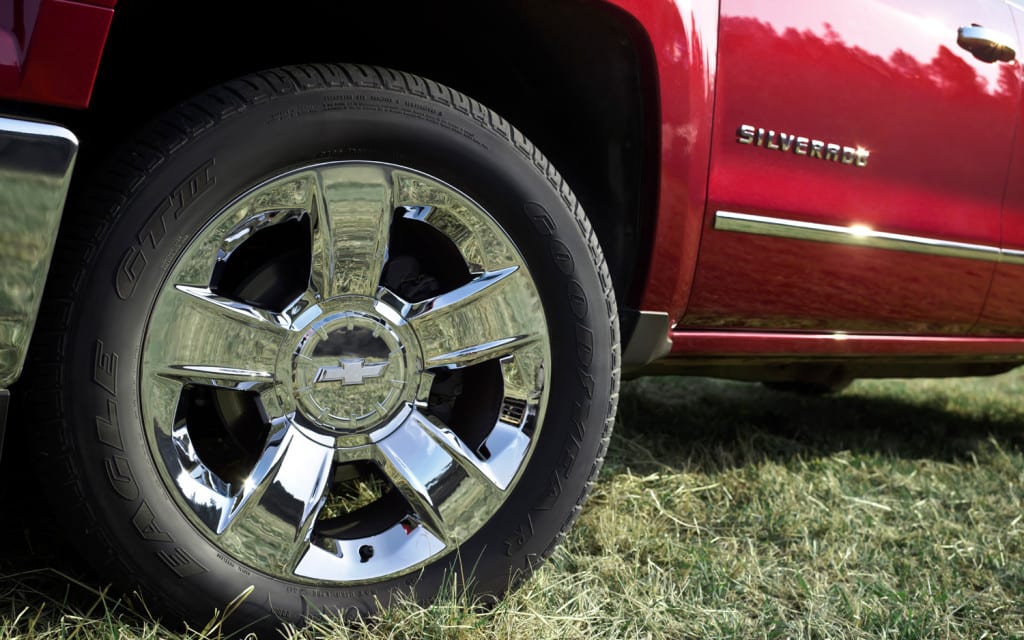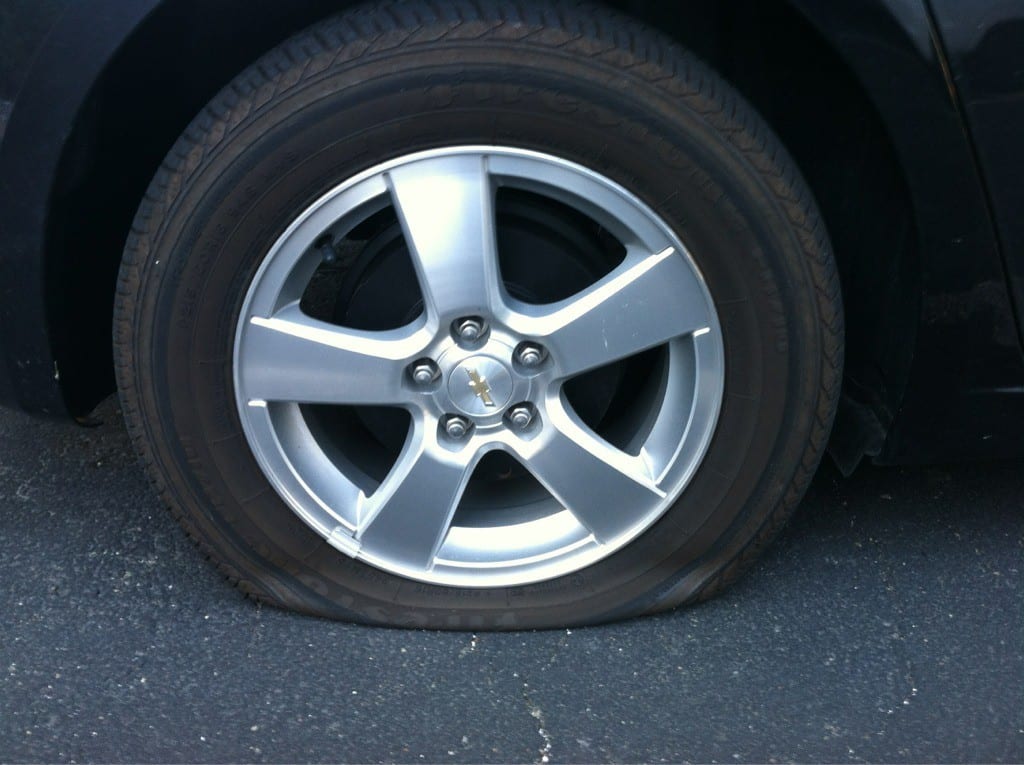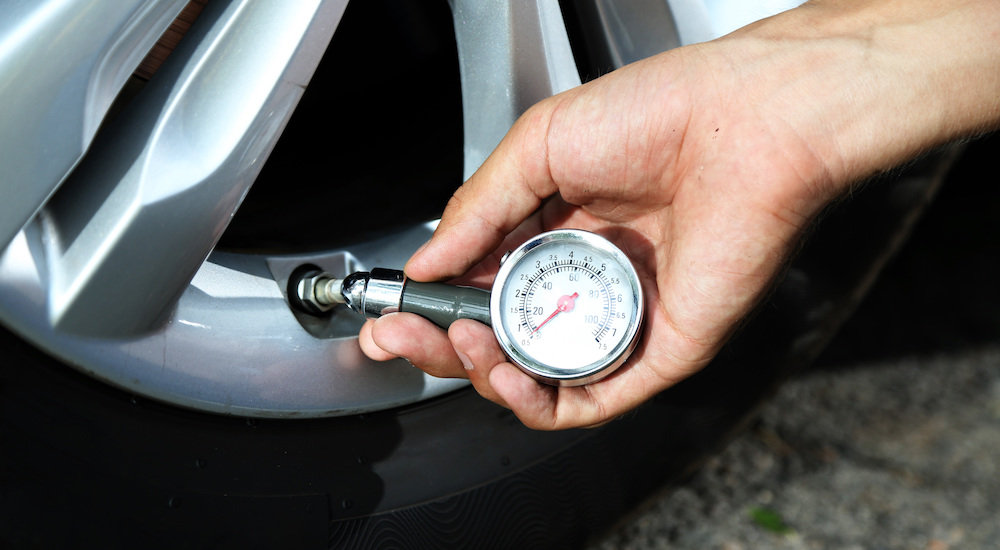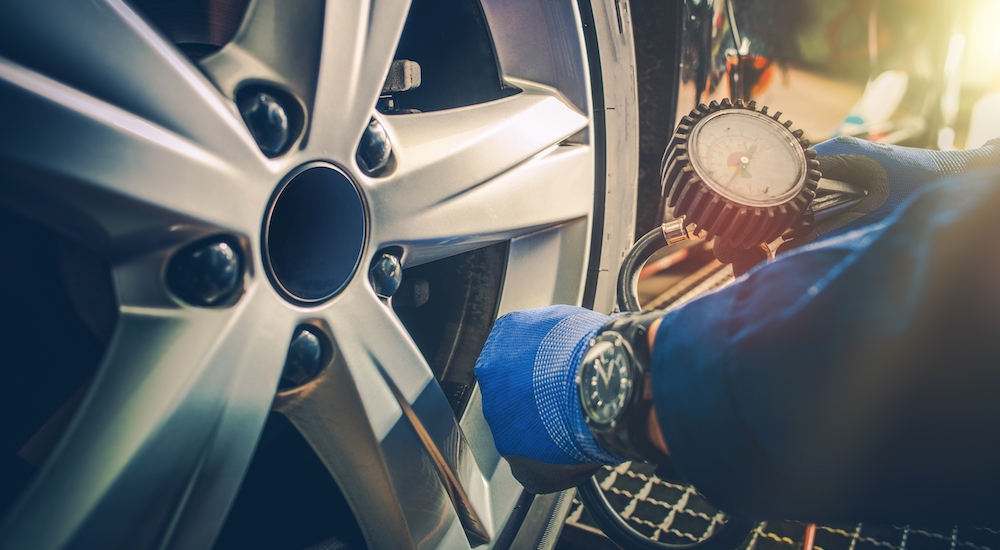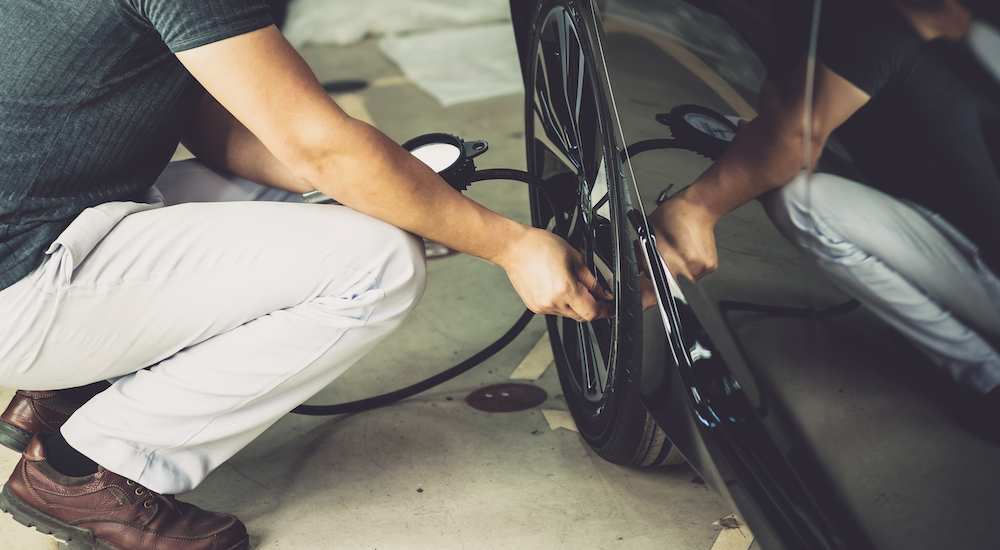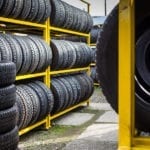Now that summer is upon us and the school year is wrapping up, lots of folks will be planning road trip adventures and embarking on long-distance drives that will test their cars, especially their tires.
Summer months can be tough on tires because the heat causes the air inside the tires to expand, and that expansion, if not properly monitored, can damage the tires and even lead to blow outs.
Nothing puts a damper on a trip to Six Flags quite like a flat tire.
Before you embark on a summer getaway, consider investing in a new set of tires, or at the very least, ask the experts to check your current tires for wear and proper pressure.
Summer Heat – A Math Equation
Okay, so we know that hotter temperatures increase tire pressure, but by how much? As outside temperatures increase, tire pressure increases by a specific increment.
The general rule states that tire pressure will increase by approximately one pound per every ten degree increase. So, let’s say that your tires’ psi, or pounds per square inch, measures 35 in January.
By July, that number could jump to 45 psi. Occasionally, a jump this big could be enough to cause a tire to blow out, depending on its condition.
But even if it doesn’t, it’s important to be aware of your tire pressure because over inflated tires wear out sooner, and lead to poor handling and braking.
You cannot rely on your tire pressure monitoring system to alert you when your tires are overinflated or even approaching overinflation.
The tire pressure monitoring system was designed to detect low air pressure, and so most systems will only light up to indicate that the tire pressure is too low.
Not exactly helpful during these hot summer months.
Inflate-Gate
How much inflation is too much? Or not enough? What should my tire pressure be?
The exact number will differ depending on the make and model of your car.
However, one thing holds true, regardless of what you drive: You want your tire pressure to reflect the amount recommended by the manufacturer, as listed in your vehicle owner’s manual, rather than the maximum tire pressure.
Check your tire pressure when your tires are cool, before you hit the road, even if you only intend to travel a short distance.
Once you’re on the road, heat will automatically start to build in your tires, and so checking them once you’ve arrived at your destination will not give you an accurate reading.
Take the Pressure Off
Sometimes a tiny investment can offer a big payout. Purchase a tire pressure gauge, of either analog or digital design, instead of the pencil gauges of the past.
There are a variety of analog and digital tire gauges available for purchase online or at storefront car part stores and service centers.
The price of these gauges reflects a considerable range from under twenty dollars to upwards of one-hundred for those models used by professionals.
Whichever you choose, just be sure it’s analog or digital as they consistently prove more durable and reliable than the pencil-gauges.
How Do I Check My Tire Pressure?
So, you’ve made your tire gauge purchase and you’re wondering how to check your tire pressure before shoving off on summer vacation.
The good news is, this is a simple process. You just need to pay attention to the numbers and respond accordingly.
These easy steps will help you check your tire pressure correctly and get you on your way that much faster:
- Before getting started, remember that tires must be cold in order to get an optimal and accurate reading
- Consult your owner’s manual or the chart often located inside the driver’s side door for the manufacturer’s recommended PSI. When you find the manufacturer’s recommended PSI, make sure that the number is true for all four tires. Sometimes, the rear tires might operate better at a different tire pressure than those in the front.
- Next, locate the valve stem, which extends approximately one-inch off the tire. Twist off the valve stem cap – it almost looks like a black pencil top.
- Press the tire gauge against the stem to get your reading. If you hear a hissing noise when you do this, it means that the gauge is not evenly or tightly aligned with the stem. In this case, realign the angle of the gauge and try again.
- If you’re using a digital gauge you might need to push a button in order to get a reading. Once you’ve got it, make sure that the pressure matches the one suggested by the manufacturer.
- As long as it matches, you’re all set. But do check all four tires, not just one.
- If the numbers don’t match, simply inflate the tire until it reaches that number.
- Be sure to replace the stem valve cap when you are done. Although it doesn’t hold air in the tire, it does keep the valve inside the valve stem, which does keep air in the tire, free from potentially damaging debris and moisture.
How Do I Inflate My Tires?
This process is just as easy as checking your tire pressure and only requires a few steps to properly get the job done.
You can do this at just about any gas or self-service station that has air compressors. They shouldn’t be hard to find.
Once you’ve arrived at your local station, follow these steps to correctly add air to your tires:
- Park your car as close to the air compressor as you safely can, without damaging it or your vehicle, so that the compressor’s hose easily reaches all four tires.
- Remove those stem caps again and store them somewhere safe so that you can easily replace them once you’ve finished inflating your tires.
- Depending on the service station you’ve chosen, the attendant will either start the compressor for you, or you will do it yourself, if it is a coin-operated machine.
- Place the hose onto the valve stem and push the push the lever. Once you do this you will feel the air flow and you should be able to hear it inflating the tire.
- Check the pressure by letting go of the level. The gauge on the hose will display the approximate pressure in your tire, but you should always double check this later with your own tire gauge. It’s better to slightly over-inflate the tire at this stage.
- Repeat this process for the other three tires. If your tires are already warm, as they likely will be because you had to drive to the service station, you can, as a general rule, inflate the tires to 3 psi over the recommended number.
- If you think your tires are properly inflated, double check your tire pressure the gauge on the hose. Too high? Gently press the gauge down to release some of the air.
- Give your tires a final check and, once you’re sure they are properly inflated, replace the valve stem caps. You’re on your way!
Don’t Forget the Spare
When it comes to tires and being prepared on the road, checking the condition of your spare tire is almost like paying your insurance bill.
That extra tire is there to get you out of a jam, but it’s not going to be much good to you if the pressure is off and you can’t use it.
Make sure when you check your running tires, you also take a moment to scope out the condition of your spare.
The Result?
With properly inflated tires, you will likely avoid a complete blowout or flat tire, both of which can be dangerous, especially if you’re traveling at considerable speed.
But, in addition to this significant safety benefit, properly inflated tires reduce overall wear on your tires, thereby extending the life of your tires, which saves you money in the long run.
Also, you should notice better handling, and increased fuel efficiency because your vehicle is not working harder than it needs to, and so the energy is conserved.
This, too, saves you money, which you can use after you safely arrive at your summer vacation destination.
